2011: Thermal Foldback for CAT4101, LED Lighting, AND9053-D
Application note (AND9053-D) written for ON Semiconductor, describing implementation of thermal fold back technique for ON Semiconductor linear constant current LED driver CAT4101. This note was followed by WEBCAST at LEDs Magazine initiated by ON semiconductor marketing. To help estimate bridge components and feedback resistor simple XLS calculator was also provided.
 |
 |
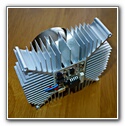 |
 |
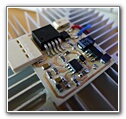 |
 |
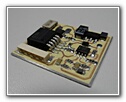 |
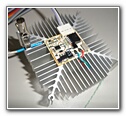 |
2011: How to Read Temperature Through I2C Bus for NCT75-based Thermostat, AND9032-D
First application note (AND9032-D) written for ON Semiconductor, outlines simple example how to read temperature from NCT75 through the I2C bus and outlines NCT75 based thermostat. This application note was resulting as derivate from other more important project. See practical application.
 |
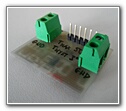 |
 |
 |
2011: Solar LED Lamp Application Using the CAT4139, AND9067-D
T. Duris, V. Kulikov, Application Note: “Solar LED Lamp Application Using the CAT4139“, ON Semiconductor AND9067/D. Webcast in LEDs Magazine: “Solar-Powered LED Lamp for Energy Savings”, Sponsored by ON Semiconductor
 |
 |
 |
 |
2009: KLIGHT-compact, high efficient and high lifetime LED Light
KLIGHT presents autonomous light and utilizes most recent LED ethnology provided by Cree. KLIGHT is designed to be used as under cabinet kitchen light, however it can be used anywhere, where you require high efficiency, high life time autonomous lighting. Due to its compact size almost any design idea can be accommodated and realized. However LEDs are more expensive than traditional lighting they are environmental friendly and offers above 5 times longer lifetime comparing to the best of class fluorescent lamp (10k hours). KLIGT incorporates sensitive ultrasonic detector, that means that light is turned on automatically when a person moves in front of KLIGHT. It also distinguish between day and night, meaning user can set threshold value for minimal incident light when you need to start artificial illumination. Thanks to involved new Cree XLamp, KLIGHT offers almost homogenous lighting over the whole projection area with minimal power requirements and lifetime above 50 000 hours. Practically, there is no need for maintenance of this light more than 10 years and even longer during normal conditions. Open Project page...
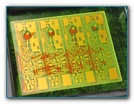 |
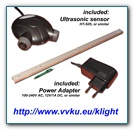 |
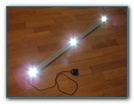 |
 |
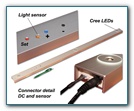 |
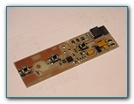 |
2009: Retro Radio
Used: Old Tesla radio frame, from friend, Suitable Auto radio (Kenwood), built Power source 70VA, 14V DC, LED illumination of front glass plate (RED), Two suitable speakers 160mm, Wood stain, Polyurethane dull paint for wood frame, Small mechanical parts and panels.
 |
 |
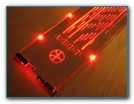 |
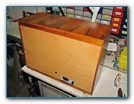 |
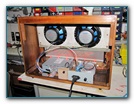 |
 |
2009: PWM DC Motor Regulator
Simple MCU based PWM regulator wit fade-in and fade-out functionality. Designed for friend (air conditioning for truck). This design was published in journal: Practical electronics 2009.. Open article in PDF (SK, 291kB)
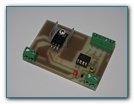 |
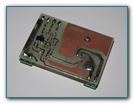 |
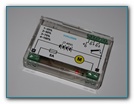 |
2009: Linear LED Digital Driver (up to 1A@24V)
Linear Driver with 2,4kHz PWM regulation based on ATMEL Tiny13 MCU. Low cost construction with no flickering effect. Designation for Microscope light.
Open Schematic (90kB)...
 |
 |
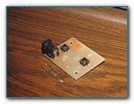 |
2008: Record DoorBell RDB-01LE
The Record DoorBell has 8 different volume settings. The actual volume setting is stored in non-volatile memory thus keeping this setting during electricity glitches and outages. The Record DoorBell is powered from central doorbell transformer, which reduces line voltage 230 V (110 V) to value around 8-16 V AC.
Note: Record Door bell was designed for pre-wired, low voltage doorbell systems with two wire installation, but it can be used in almost any flat or house. For detailed installation instructions please refer to the Record DoorBell manual. Open Project page...
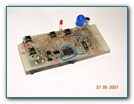 |
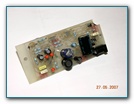 |
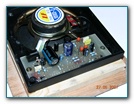 |
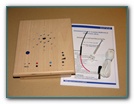 |
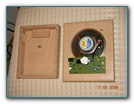 |
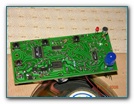 |
2007: Differential Thermostat
This simple differential thermostat was designed for automated control of home heating system pump. It compares signals from two sensors and controls water-circulating pump. It has low standby consumption and implemented additional function of refreshment of the pump in a summer time, in order to prevent blocking of pump by sedimentation of impurities. This project was published in journal:
Practical electronics 2007.
Open article in PDF (SK, 370kB)
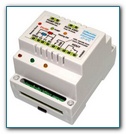 |
 |
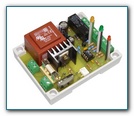 |
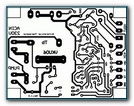 |
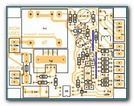 |
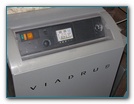 |
2007: Simple K-line OBD Interface
This design is simple low-cost alternative to the OBDII interfaces build on LM integrated circuits and optocouplers. In order to get working OBD interface based on optocouplers it is necessary to make several adjustments or use expensive optocouplers. This circuit does not need any adjustments, but it is necessary to take into account that the circuit is not galvanic isolated, therefore there is recommendation to use notebook computer powered from batteries. Respectively, the grounding must be checked before connecting interface to the car OBDII bus. This design was published in journal: Practical electronics 4/2007.
Open article in PDF (SK, 370kB)
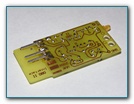 |
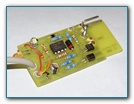 |
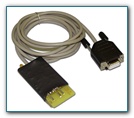 |
1994: Linear Laboratory Supply 0-30 V, max 3 A
Supply voltage: 240V, 50Hz
Output range:
I. 0-30V,
Output current: max 3A,
Current compliance: in steps,
0.3, 0.5, 1, 1.5, 2, 2.5, 3 A, MAX, Voltage Regulation:
I. Digital (D/A 10 bit) or
II. Analog (potenciometer)
II. +5 V, +12 V, +12 V fixed (max 1A),
Current compliance: built-in 1A
Display: 3 1/2, output voltage, current
(based on C520, A/D with LED output)
Note:
This design includes circuit for reducing of power disipation, because of looses on power transistors especially on lower voltage range (0-15V) of the source
Designed and realized in 1994, Schematic: lost, pcb layout hand made
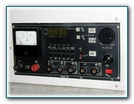 |
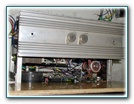 |
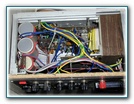 |
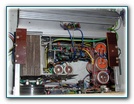 |
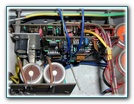 |
 |
1996: Triac Power Regulator
Supply voltage: 240V, 50Hz
Maximum reg. current: 15A
Regulation principle: phase shift 0-180°
(with settings for lower and upper regulation limit)
Designed and realized in 1996, Schematic lost, PCB layout hand made
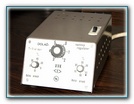 |
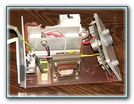 |
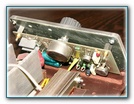 |